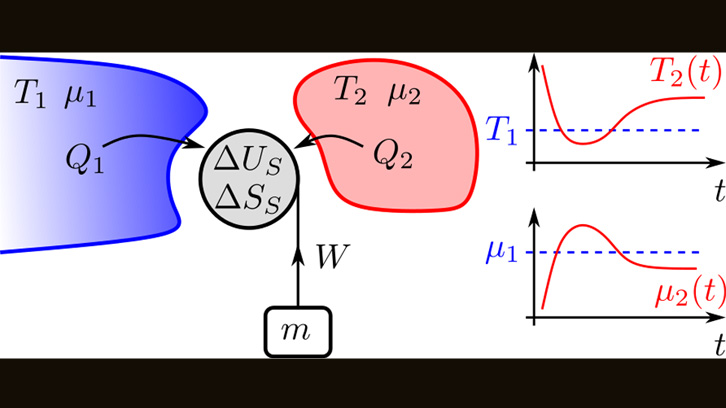Old thermodynamics tools for understanding entropy at the nanoscale

We have a good qualitative intuition about the concept of entropy, but its quantitative application to the quantum world is still a challenge for physicists. This article describes a framework for studying the second law of thermodynamics in nanodevices using old ideas dating back more than 90 years.
Entropy is "why you can’t get the toothpaste back in the tube," according to the Woody Allen movie "Whatever Works." The law about the increase of entropy, known as the second law of thermodynamics, is a cornerstone of science with implications ranging from quantum nanoscience over biology to black-hole physics. Unfortunately, while we have a good qualitative intuition about the second law, it remains a challenge to get a precise quantitative understanding beyond the textbook case of equilibrium processes of macroscopic systems.
With today’s experimental progress in nanoscience, we have clearly left the regime of equilibrium processes of macroscopic systems and our tutorial article lays down the basics to quantitatively understand thermodynamics beyond that regime. This is done by introducing microscopic definitions of the central thermodynamic quantities internal energy, work, heat, entropy, temperature, and chemical potential, which hold even out of equilibrium and independent of the system size. Importantly, the definitions do not require precise knowledge about the microstate of the system but are determined by experimentally accessible coarse-grained information.
It is then shown how to derive the first and second laws for isolated and open quantum systems. Furthermore, based on a self-consistently determined time-dependent temperature for the bath, Clausius’ inequality automatically emerges from the second law. The framework established in our article allows studying a variety of experiments in quantum nanoscience, in particular beyond the assumption of a static infinite bath and for many-body systems about which we have only limited information and control.
On the technical side, our results follow by using a concept, which we call "observational entropy." This entropy concept quantifies the information an external agent has about a thermodynamic system. It was already used by von Neumann and Wigner more than 90 years ago, but only recently it regained attention as a versatile tool in quantum information theory, quantum many-body theory and nonequilibrium statistical mechanics. Thus, our article establishes an overarching perspective by showing how ancient ideas, which can be traced back to Boltzmann, can be used to fruitfully study quantum devices at the nanoscale.
Philipp Strasberg and Andreas Winter
Quantum Information Group
Physics Department
Universitat Autònoma de Barcelona
References
Philipp Strasberg & Andreas Winter, First and Second Law of Quantum Thermodynamics: A Consistent Derivation Based on a Microscopic Definition of Entropy, Physical Review X Quantum, vol. 2, p. 030202 (2021), DOI: 10.1103/PRXQuantum.2.030202


